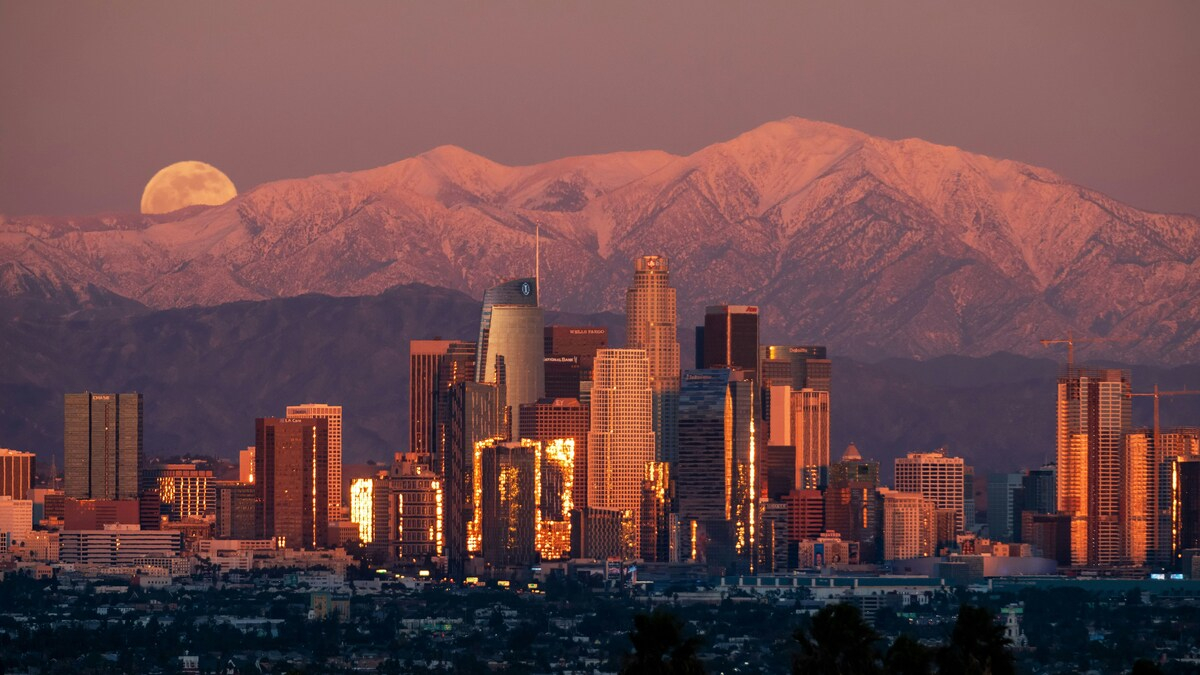According to Cal Fire, all firefighting aircraft were grounded temporarily and one of only two amphibious planes-only capable of scooping and delivering 1,600 gallons of water per trip was incapacitated when droplets of collision collided with a water-dropping aircraft battling the Palisades Fire in Los Angeles. The collision involved a Canadair CL-415 SuperScooper turboprop plane: a key arsenal in combating the fire raging through the area.
It happened around 10 a.m., as per the account of Cal Fire spokesman Chris Thomas. This air interference is classified as unlawful under a Temporary Flight Restriction (TFR) that has been placed by the Federal Aviation Administration (FAA), barring any unauthorized aircraft within this confine of airspace during emergency operations.
“This is creating a huge danger,” Thomas said. “Grounding all aircraft can delay firefighting efforts by up to half an hour, during which a fire can spread uncontrollably.” The temporary halt caused a major impediment in efforts to curtail the Palisades Fire, which has already claimed thousands of homes between Malibu and Santa Monica.
Read more: These are all the celebrities who have lost their homes in the tragic Los Angeles fire
Impact on firefighting efforts
The grounding of Super Scooper has really affected the ability of Cal Fire to fight the large wildfire. These craft are specifically equipped to carry out water drops continuously and are irreplaceable when fighting fast-moving fires. The Super Scooper can scoop about 1,600 gallons of water from the ocean in about five minutes. This results in substantially more drops on a single flight. Unlike fixed-wing firefighting aircraft, which must return to an airport to refill, the Super Scooper can operate without interruption, thereby maximizing its efficiency during critical moments.
Loss of the aircraft means a cutback in tens of thousands of gallons of water that this aircraft would have deployed for suppression in the fire. Every fire-fighting activity is proceeding at full speed, and therefore, every moment and resource is vital as crews work to contain the flames. These aircrafts are our most effective tools for slowing the advance of the fire,” he says.
Read more: Hello to new jobs – US economy soars in December before Trump arrival
Meanwhile, others are having fiery ground battles against extreme conditions such as Santa Ana winds coupled with dry conditions, which have now allowed this fire to spread to over 2,900 acres. Crews are working day and night to keep further devastation away from homes close to the coasts of Malibu and Santa Monica.
FAA warns against unauthorized drone activity
The Los Angeles Times reported that a drone was working for a photographer capturing video footage of the fires involved in this incident. Such action is a clear violation of the FAA regulations, prohibiting unauthorized flight in these TFR areas during the emergency operations.
“It is a crime against the federal government and punishable by up to 12 months in prison for interfering with firefighting efforts on public land,” declared the FAA. Serious civil penalties accompany violations, which may be as high as $75,000. According to the FAA, the agency takes this action very seriously and will pursue enforcement action against any offenders.
Despite such restrictions, airspace over firefighting operations is becoming more crowded with unauthorized drone activity. “Not only does it risk the lives of pilots and crews, but this also jeopardizes the whole community,” said Thomas.
Such public attention is critical to compliance with flight restrictions during emergencies. While the area is temporarily calming down, the onset of more fires is proof of urgency toward having all resources operating at full capacity. Unfortunately, firefighting efforts are largely comprised with one Super Scooper off the mission.
As Los Angeles now tries to cope with flames of an unprecedented wildfire, officials here are now rallying the public to respect airspace limitations and allow emergency crews to work on their tasks without hindrance. For every minute and resource counts on the race to protect lives and property from the disastrous effects of these blazes.
